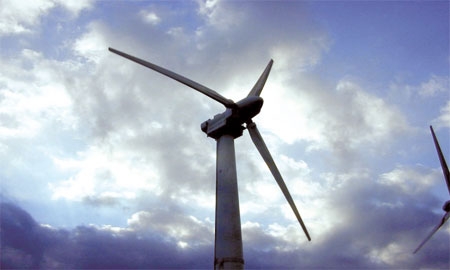Energy is a vital component of every country’s economy, and reducing dependence on foreign energy sources is an important goal for many governments. The Philippines has made great strides in this area in the past three decades, and is moving forward with several projects that will further reduce the need to import energy.
As a country with relatively small proven oil reserves and low oil production, the Philippines is forced to seek sources of energy from other areas. The inauguration of the Malampaya natural gas field in 2001 helped move the country towards a less expensive and more domestic energy supply profile.
Through investments in local energy infrastructure, the Philippines has managed to slash its dependence on foreign energy sources from 92% in 1973 to 40% now. That figure will fall even more in the near future, as some ambitious projects begin producing even more energy locally.
Some of the projects will use fossil fuels, such as natural gas, to increase domestic energy production. Nevertheless, the country’s long-term goal is to focus more and more on renewable sources to increase local energy production, as the technology becomes more advanced and less expensive.
“Through technology and mass production, renewable energy is going to become a reality,” says Antonio Cailao, president and CEO of the
Philippine National Oil Company, or
PNOC. “I am very much in love with solar energy because among all the sources of renewable energy, it is the only renewable energy which is not site-specific. The sun is in Spain, the sun is in Germany, the sun is the same everywhere, and so that is why it is not site-specific.”
The government has passed legislation in recent years to help spur the development of renewable energy. One was the Renewable Energy Law, which identifies major sources of emerging energy, such as geothermal, hydro, solar, wind, ocean and biomass. Solar is a particularly interesting area, as the country has abundant sun and an industrial base capable of producing the semi-conductors and other components needed to build solar farms.
The government’s goal is for the country to get 40% of its primary energy requirements from renewable sources by the end of 2013. That objective is very achievable, after getting as high as 35% in recent years with good amounts of rain to power hydroelectric generation.
The country already has a very important source of renewable energy, from geothermal generating plants. About 27% of electricity generated in the Philippines comes from these plants, which use heat from deep in the earth to generate steam and turn turbines, making it the biggest user of wet-steam geothermal technology, and the second-biggest producer on the planet of electricity using geothermal energy, after the U.S.
At the Energy Investment Forum last December held in Makati City, Secretary of Energy Rene Almendras stated concerning renewable energies, the Department of Energy (DoE) “will take the lead, will push and will make sure that things will happen.” To everyone working in the field of renewables, the DoE promises the highly anticipated opportunities will soon materialize.
Renewable energy will in the long term be able to supply much of the country’s power needs, but in the shorter and medium term the Philippines has plans to use its natural gas resources to make its power sector more efficient, less expensive, and less dependent on foreign fuels.
“The vision I believe in is that renewable energy will reach parity and advance periodically compared with fossil fuels,” says Mr. Cailao. “The plan the Department of Energy has is to launch the gasification of the Philippines, which will be the intermediate step/fuel before we move to renewable energy.”
The country currently has one functioning gas field, called Malampaya. The field is located about 310 miles west of Luzon Island and has estimated reserves of as many as 3.7 trillion cubic feet of natural gas, and 85 million barrels of condensate. The field supplies three generating stations that between them provide 2,700 megawatts of electricity for the island, out of 7,600 megawatts of total generating capacity on Luzon.
The lack of a gas pipeline network greatly limits the use of the indigenous gas, but the government is planning to invest in the kind of infrastructure needed to supply gas to much of the country. The first step of the plan will be building the Batangas-Manila pipeline, known as the BatMan project.
“This pipeline will go into the heart of Manila to service the industrial, commercial, transport and retail sectors, and the generating plants,” explains Mr. Cailao. “Can you imagine lowering the cost of fuel by over 50% by having gas? It is a big boost to the economy, and that is also income for the foreign investors who would like to come in.”
The addition of a pipeline network will reduce the need for foreign energy by another three percentage points, Mr. Cailao estimates. Using more gas will have other benefits as well. Natural gas burns more cleanly than oil, producing less greenhouse gases.
Natural gas is also cheaper than fuels such as diesel.
Even as gas pipelines are extended around the country, the Filipino government and private businesses will continue to invest in cheaper and more efficient renewable energy, with the goal of eventually cutting the need for energy imports to a bare minimum, a goal countries around the world should share.

0 COMMENTS